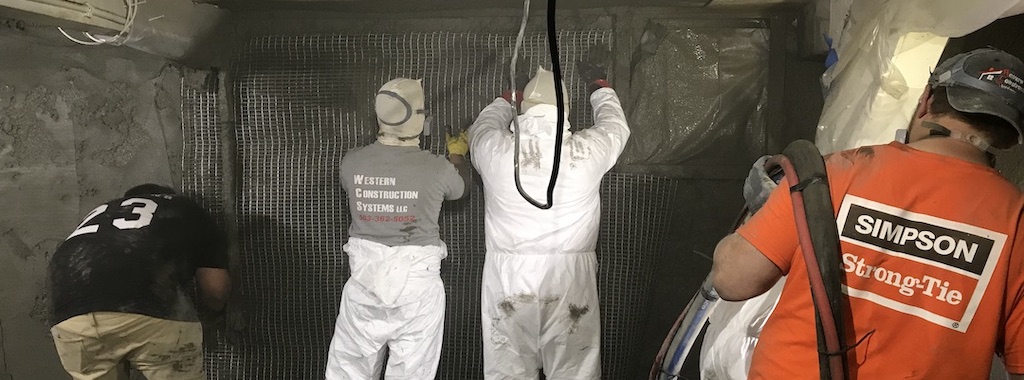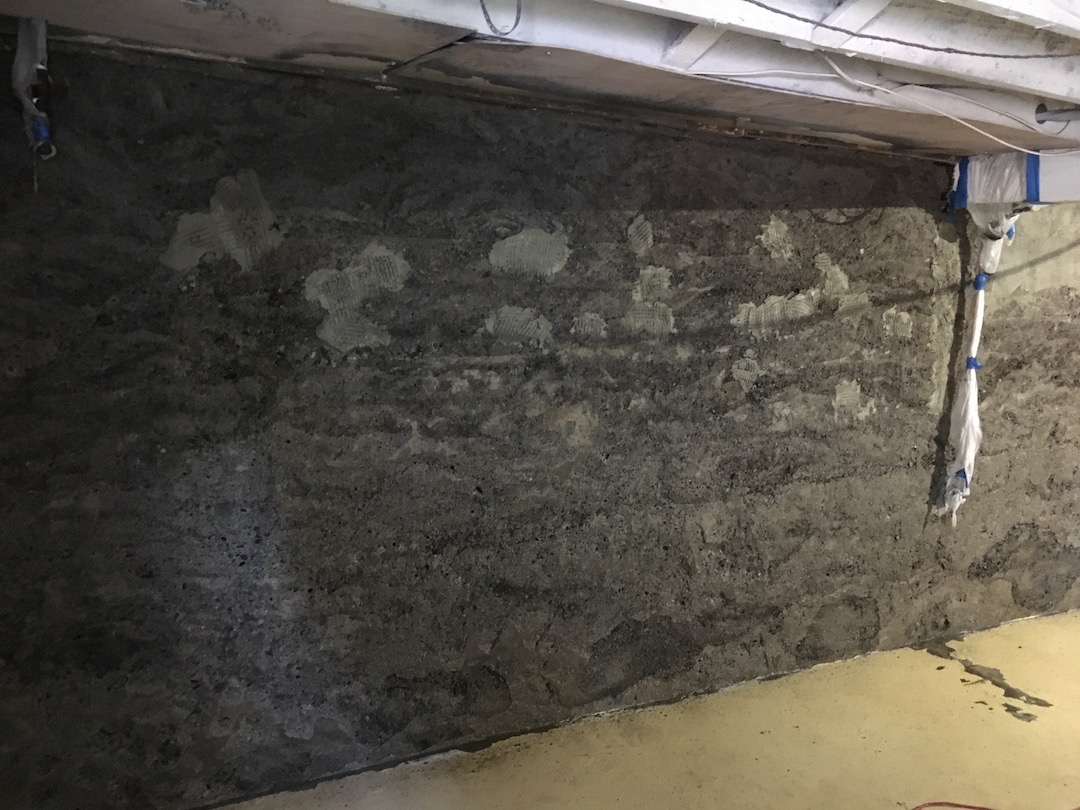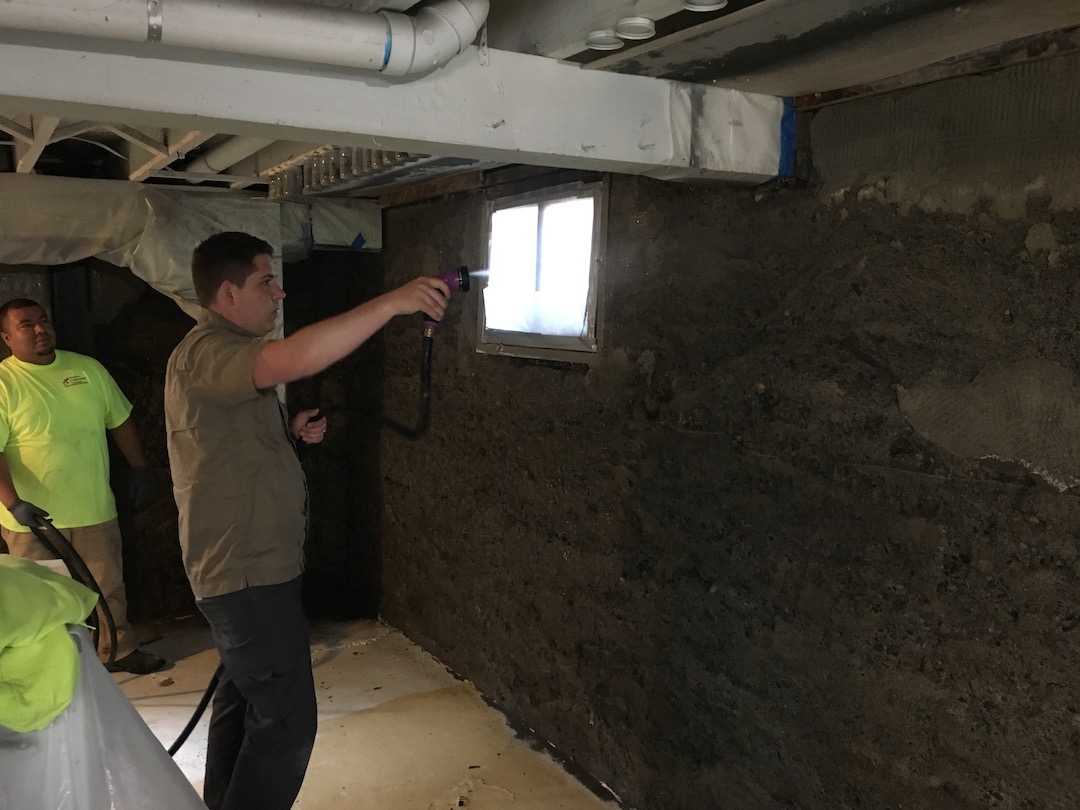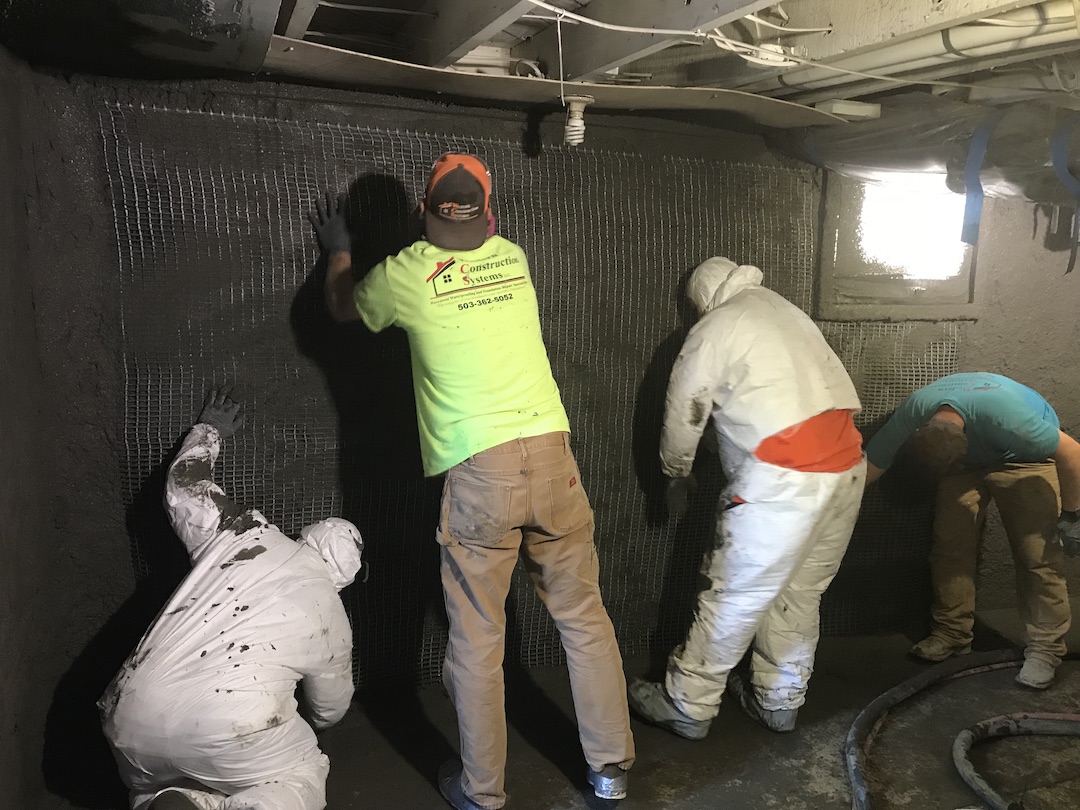The Simpson Strong-Tie fabric-reinforced cementitious matrix (FRCM) system was used to strengthen unreinforced concrete basement walls at a Portland residence and provide a fresh new look for years to come.
Project Category: Single-Family Residence
FRCM Installer: Western Construction Systems
Project Manager: David Arana
Project Size: 1,200 sq. ft.
THE CHALLENGE: Reinforce concrete basement walls without diminishing usable space or impairing the home’s aesthetic
Like many homes built in Portland, Oregon, in the early 20th century, this Reed District home was constructed with a full basement consisting of unreinforced concrete foundation and walls. Shortly after the current owners purchased the home, they knew they wanted to add structural integrity to the home in order to better withstand a seismic or wind event. While the home’s overall strength and durability were of course the owners’ main concern, they also wanted an upgrade that wouldn’t detract from the home’s appearance.
THE SOLUTION: Secure the mudsills to the foundation with retrofit foundation plates; reinforce the basement walls with a few thin applications of fabric-reinforced cementitious matrix
Western Construction Systems, an installer trained by Simpson Strong-Tie, assisted the owner in selecting fabric-reinforced cementitious matrix (FRCM) as the best solution for strengthening the home’s unreinforced concrete basement walls. The contractor discussed the possibilities with the owner and proposed the Simpson Strong-Tie® FRCM product. Not only would the productimprove the strength of the existing basement walls, it would also create a smooth new cementitious finish in the space. Additionally, FRCM was chosen in lieu of adding shotcrete walls because the new owners didn’t want to lose space in the basement area. With shotcrete, they could have lost as much as 4″to 6″of interior space along each wall, as compared to only ¾”per wall with the FRCM.
The existing basement walls consisted of sound unreinforced concrete with multiple rock pockets.
The first stage of the retrofit consisted of repairing the unreinforced basement walls before the FRCM system was applied. Rock pockets and cracks were repaired with a vertical repair mortar to create a suitable substrate for the application of FRCM.
After the first phase, the following procedure was used to apply the FRCM product.
(1) The substrate was prepared by creating a saturated surface-dry (SSD) state to provide the optimal surface conditions and maximum adhesion for the cementitious matrix (CSS-CM) base layer.
(2) Western Construction Systems sprayed a first layer of CSS-CM.
(3) The same installers then wet-set the Simpson Strong-Tie unidirectional carbon grid (CSS-UCG) by pressing the fabric into the first layer of CSS-CM) mortar that had been sprayed on the walls.
(4) Shortly afterwards, a second layer of the CSS-CM was spray-applied in order to provide a continuous application of the system.
(5) After the second layer of CSS-CM was applied, the surface was troweled to a smooth finish.
(6) Full cure time was observed. In this case, the walls did not have to be covered by burlap to achieve wet curing requirements because of the damp conditions in the basement and a curing compound was applied right after the CM was installed. After full cure time had elapsed, the walls were ready for painting, installing drywall or leaving bare.
Not shown here, several Simpson Strong-Tie URFP universal retrofit foundation plates were installed connecting the wood walls above to the basement walls. In order to provide code-compliant lateral resistance to a seismic or wind event, the mudsills of the existing wood frame needed to be better connected to the foundation walls below. The URFP is an ideal solution to ensure a load path to the foundation in cases where there is minimal vertical clearance, or when the mudsill is offset or inset from the foundation edge, as was the case in the Reed District home.
- Spraying water first to create a saturated surface-dry (SSD) condition.
2. Installers pressing the carbon grid (CSS-UCG) into the first layer of the wet-set cementitious matrix (CSS-CM), directly after it was spray-applied to the walls.
3. Getting ready to spray the second layer of the cementitious matrix (CSS-CM) over the carbon grid as the crew finishes pressing up the fabric.

4. The final surface of the FRCM as shown with a trowel finish.
 All in all, the FRCM application took four days’ preparation for crack repair installation and to achieve the proper surface profile. FRCM installation itself took only one day for the entire basement, plus one day of cleanup.
All in all, the FRCM application took four days’ preparation for crack repair installation and to achieve the proper surface profile. FRCM installation itself took only one day for the entire basement, plus one day of cleanup.
THE RESULTS: The contractors were pleased with the ease and quickness of installation; the homeowners were satisfied that the product was installed so quickly and smoothly while ensuring they had a strong, safe home to live in.
After installation, Western Construction Systems said “The install of the FRCM was great. . . . The overall process allowed us to complete the installation of approximately 300+ bags of the CM and about 1,200 square feet of the carbon fiber grid in just one day. Typically, if we were to hand-trowel this amount of mortar, it could have taken nearly a week. “
They continued: “We were also impressed with the finishing ability of the CM. The mortar troweled smooth and held its form and stuck to the foundation well. Another huge benefit was the long workability of the CM. Although the mortar is high PSI, it has a slow set time, which is nice on the job not having to fight the mortar from setting during application.”
After reinforcing the basement walls with Simpson Strong-Tie FRCM, the homeowners were extremely pleased with the quick installation of the FRCM product and the updated look of the basement. The additional strength that was added to the unreinforced concrete foundation by the FRCM product enhanced their peace of mind with the assurance that the house would be able to keep them safe in the event of a wind or seismic event for many years to come.







